"Here I put a comma, there, when it's necessary to cut the view, I put a parenthesis; there I end it with a period and start on another theme."
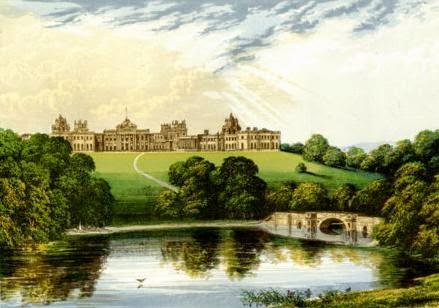
Blenheim Palace and Park, creato da 'Capability' Brown
Quasi fosse l'opera di un compositore o di un poeta, il primo grande paesaggista della storia rivoluzionò l'idea di 'giardino alla francese ' o 'all'italiana', governata da rigide geometrie, per creare con il verde vere e proprie composizioni artistiche ispirate alla libertà e alla prospettiva...tutto doveva essere gradevole per lo sguardo, come una melodia lo è per l'orecchio e per l'animo.
Sembra quasi una contraddizione che le prime fasi della sua vita siano così scarsamente documentate, avere così poche notizie dell'infanzia di Lancelot Brown, quinto dei sei figli di William Brown, steward presso Kirkharle nella valle di Wansbeck nel Northumberland, di modesti natali, poichè stiamo parlando di un bambino destinato ad avvolgere in una fascia di gloria tutta l'Inghilterra e a cenare con aristocratici e duchi. Di lui si sa che fu battezzato nel 1716 e che cominciò già da bambino a lavorare quale aiuto giardiniere presso la proprietà della famiglia Lorraine ma fu l'impegno a Kiddington Hall, nell'Oxfordshire, dove gli fu chiesta la creazione dei giardini che compongono il parco della proprietà attorno ad un grande lago, il suo primo vero incarico come paesaggista: era il 1739 e cominciava così un brillante, ineguagliabile percorso creativo che lo condurrà ai vertici che tutt'oggi mantiene nel suo campo dopo ben più di tre secoli.
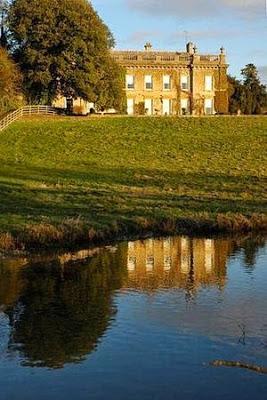
Nel 1741 si unì al personale che lavorava alle dipendenze di Lord Cobham a Stowe, Buckinghamshire, dove era a servizio di William Kent, uno dei fondatori del nuovo stile inglese del giardino paesaggistico - landscape garden; in qualità di propugnatore e sostenitore del nuovo stile inglese, Brown divenne immensamente ricercato dalle più grandi e famose famiglie fondiarie giungendo, pensate, a dar vita a più di 170 tra parchi e giardini, molti dei quali ancora esistenti così come lui li aveva pensati, disegnati, creati, curati.Egli non era al tempo l'unico creatore di parchi e giardini, ma era sicuramente il più quotato ed il più capace proprio perché nacque come giardiniere e la sua conoscenza in fatto di piante ed alberi era ineguagliabile, e di ciò era ben consapevole chi lo assumeva; aveva maturato esperienza nelle arti del drenaggio e della gestione delle risorse idriche e soprattutto aveva un gusto infallibile: egli possedeva il dono, osservando il paesaggio nei punti in cui risultava scialbo, monotono, poco accattivante, di immaginarlo già mutato alla luce delle sue potenzialità di mutamento ( era quello che egli stesso definiva la sua "capacità" - da cui il soprannome Capability ) e quello di convincere il proprietario a condividere la sua stessa visione. ( nella stampa che vedete sotto datata c.1794 che si suppone essere di Samuel Hayes potete osservare un carro inventato da Capability Brown al fine di spostare gli alberi e facilitarne l'interramento )
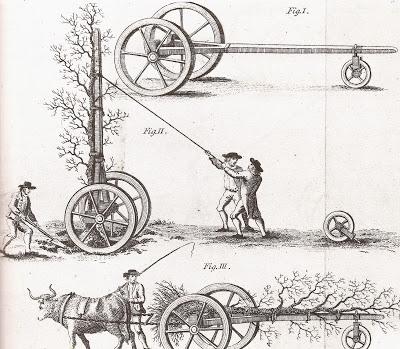 Di lui scriveva il poeta William Cowper: "Il Mago onnipotente, Brown appare, / Parla. Il Lago di fronte diventa un Prato, / I Boschi svaniscono, le Colline si abbassano, e le Valli aumentano."Perciò, durante l'epoca della Ragione e dei Lumi nel vecchio continente vi era chi, nel paesaggio inglese, inventava giardini e parchi cercando di imitare pittori stranieri nel tentativo di evocare autori classici … e Capability Brown nelle sue creazioni sembrava proprio rifarsi alle Bucoliche e alle Georgiche virgiliane.
Di lui scriveva il poeta William Cowper: "Il Mago onnipotente, Brown appare, / Parla. Il Lago di fronte diventa un Prato, / I Boschi svaniscono, le Colline si abbassano, e le Valli aumentano."Perciò, durante l'epoca della Ragione e dei Lumi nel vecchio continente vi era chi, nel paesaggio inglese, inventava giardini e parchi cercando di imitare pittori stranieri nel tentativo di evocare autori classici … e Capability Brown nelle sue creazioni sembrava proprio rifarsi alle Bucoliche e alle Georgiche virgiliane.Elemento caratteristico del giardini paesaggistico stabilito da Charles Bridgeman e William Kent era l'assenza di recinzioni cui sopperiva invece il così detto 'ha-ha' nato sul finire del XVII secolo in Francia e lì così nominato dal Delfino: si trattava di un fossato scavato a confine con la proprietà in cui il muro veniva costruito sotto il filo di campagna, piuttosto che a vista sopra, con il triplice vantaggio di drenare il terreno, d'interdire il passaggio di animali indesiderati e di non interrompere la visuale poiché così lo sguardo poteva spaziare indisturbato da limiti che non fossero naturali.
Capability era noto al suo tempo anche per la notevole onestà che lo connotava, lavorava quasi per vocazione chiedendo esigui compensi, anche se le famiglie che lo assumevano dovevano essere obbligatoriamente molto facoltose perché i lavori che gli venivano commissionati erano molto lunghi, spesso si protraevano nel tempo per anni e richiedevano la collaborazione di centinaia di operai, divenendo così notevolmente esosi.
Alcune delle sue opere le possiamo ancora oggi osservare a Croome Court dove, nel 1751, progettò anche la residenza,
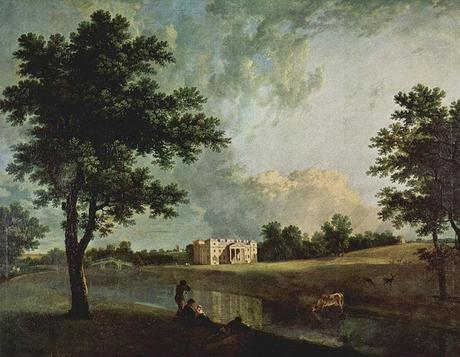
Richard Wilson, Croome Court, olio su tela datato 1758
a Blenheim Palace,
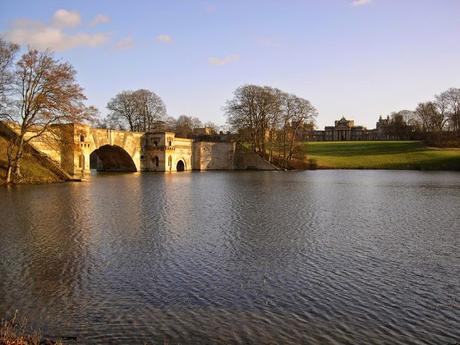
A Blenheim Brown arginò il misero flusso che scorreva sotto di Grand Bridge progettato da Vanbrugh, affondandone metà della struttura, con ottimi risultati, e costruì un tempio classico che su di un dosso sembra osservare scorrere l'acqua;
a Warwick Castle, lavoro risalente al 1750,
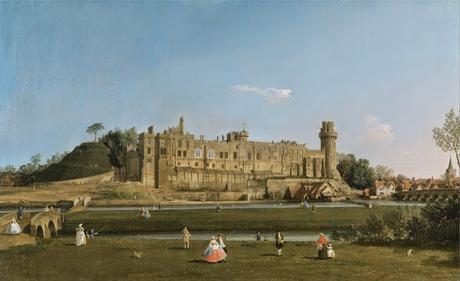
Giovani Antonio Canaletto, The east front of Warwick Castle, 1752
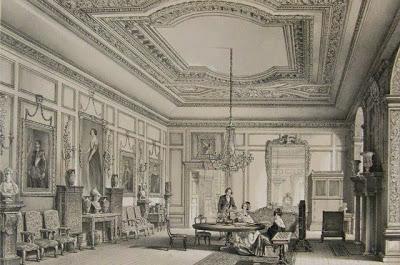
The Cedar Drawing Room, Warwick Castle, incisione
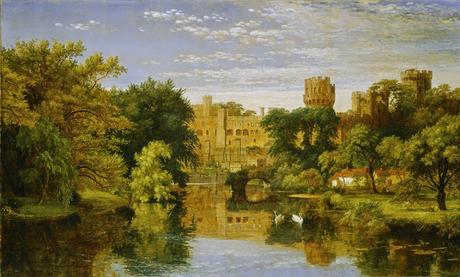
Jasper Francis Copsey, Warwick Castle, 1857
a Harewood House,
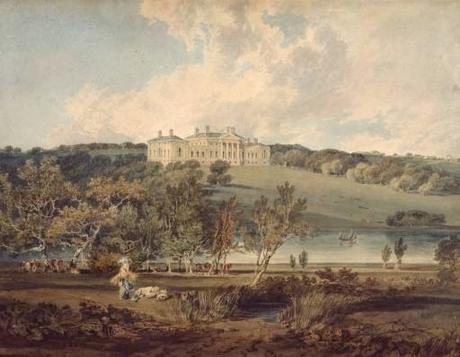
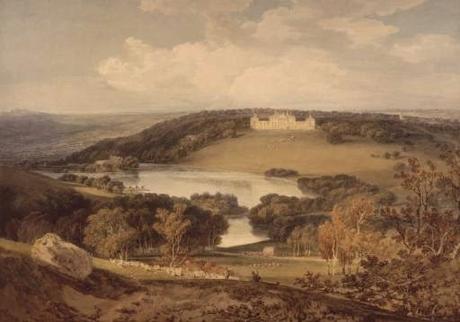
Joseph Mallord, William Turner, Harewood House from the North East and from the South, 1798,© Harewood House Trust
a Bowood House dove fece il The Sculpture Garden, che comprende la famosa collezione di Marmi Lansdowne e dove più di 2.000 ettari di terreno furono architettati tra il 1762 e il 1768 e di cui fanno parte il Pinetum, l'Arboretum, ed un tempio in stile dorico;
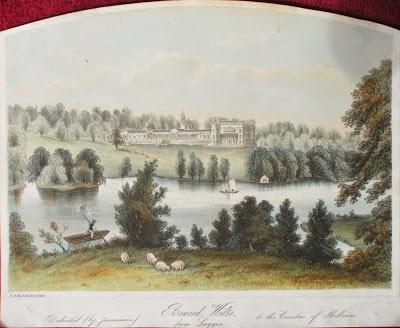
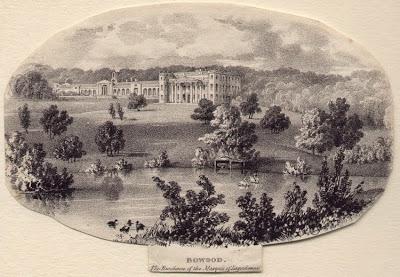
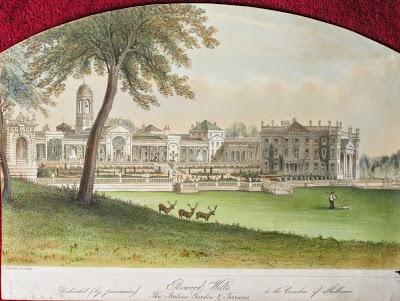
a Milton Abbey,
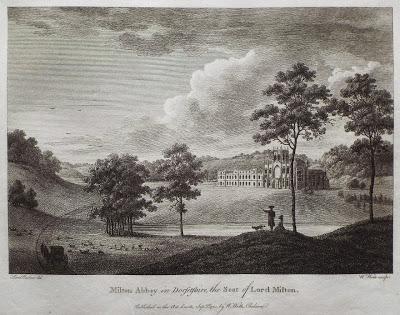
Milton Abbey in Dorsetshire, the Seat of Lord Milton, Ref: P/12099 - Copper Artist; Carlow Lord Engraver; Watts W Publisher. W Watts, Chelsea
e dalle parti di Milton Abbas Village, in alcuni punti a Kew Gardens ed ancora ad Highclere Castle
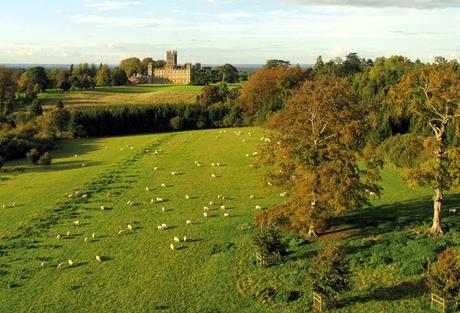
solo per nominare i luoghi più noti.)Nel 1764 venne infine nominato Maestro Giardiniere ad Hampton Court Palace,
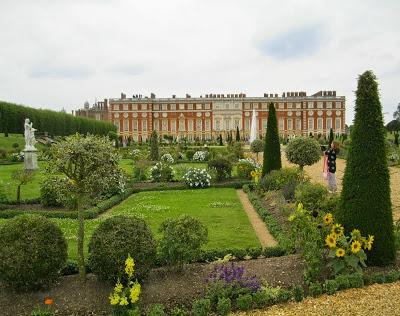
quale successore di John Greening e divenne da allora residente presso la Wilderness House ( Ad Hampton Court in una serra cresce tutt'oggi una vite che fu piantata da Capability Brown nel 1786; possiede un letto speciale solo per le proprie radici e produce ancora ogni anno molti grappoli d'uva! )
Da ricordare sono anche le sue qualità di architetto che lo condussero a progettare molte residenze padronali di notevole valore estetico che tutt'oggi arricchiscono ancora le colline inglesi.Durante i 32 anni che segnarono l'apice della sua carriera egli non uscì mai dai confini della sua nazione, perché diceva che prima doveva ultimare di modificare il suolo inglese, e concluse la propria vita serenamente, da uomo agiato quale meritò di divenire.
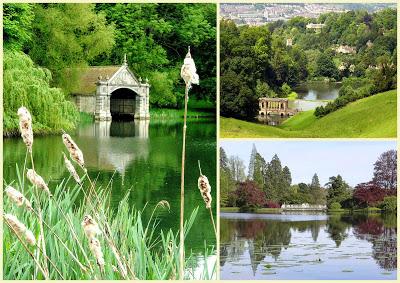
Burghley House Garden, Sheffield Garden, Prior Park Palladian Bridge
Anche oggi finisce qui il nostro tempo e si conclude così questa nostra passeggiata tra amenità paesistiche che hanno reso ancor più prestigiosa la verde Inghilterra e con rinnovato affetto e gratitudine saluto tutti voi che mi seguite con interesse e devozione, voi che leggete, o che semplicemente vi trovate a passare per questo piccolo angolo del grande mondo del web.
A presto ♥
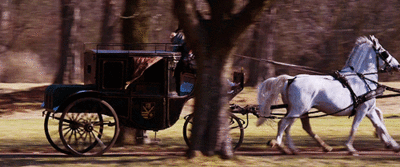

Fonti bibliografiche:
Jane Brown, The Omnipotent Magician: Lancelot "Capability" Brown, 1716–1783, London, Chatto & Windus, 2011
Roger Turner, Capability Brown and the Eighteenth-Century English Landscape, The History Press, 2011

"Here I put a comma, there, when it's necessary to cut the view, I put a parenthesis; there I end it with a period and start on another theme."
- picture 1 - Blenheim Palace and Park, made by 'Capability' Brown
As if it was the work of a composer or of a poet, the first great landscape designer of history revolutionized the idea of 'French garden' or 'Italian garden', both governed by strict geometries, to create real green compositions of art inspired by freedom and perspective ... everything had to be pleasing to the eye, so as it is a melody for the ear and the soul.
It almost seems a contradiction that the very first years of his life are so poorly documented, actually we have so little news about Lancelot Brown's childhood, the fifth of six children of William Brown, steward at Kirkharle in the valley of Wansbeck in Northumberland, of modest birth, it seems a contradiction, I said, if we think that we're talking about a child destined to wrap in a band of glory throughout England and fated to dine with famous aristocrats and dukes. About him we know that he was baptized in 1716 and that began as a child to work as assistant gardener at the Lorraine family property but it was the commitment to Kiddington Hall, Oxfordshire, where he was called for the creation of gardens that made the park property around a large lake, his first real job as a landscape designer: it was 1739 and so began a brilliant, unique creative path that will lead him to the top in his field, a position that he still keeps well today after more than three centuries.
- picture 2
In 1741 he joined the staff who worked in the employ of Lord Cobham at Stowe, Buckinghamshire, where he was in the service of William Kent, one of the founders of the new style of the English landscape garden; as an advocate and a supporter of the new English style, Brown became immensely sought after by the biggest and most famous wealthy land families, to the point to create more than 170 amongst parks and gardens, many of which still existing as well as he thought and he had designed, created, cared them.
He wasn't, at his time, the only creator of parks and gardens, but he was certainly the most quoted and most capable because he began working as a gardener and his knowledge in terms of plants and trees was unparalleled, and of it was well aware who assumed him; he had gained experience in the arts of drainage and of water management and above all had an unerring taste: he had the gift, observing the landscape in the points when it was dull and unattractive, to imagine it already changed in the light of its potentialities (it was what he himself called his "Capability" which became his nickname) and to persuade the owner to share his own vision. (In the print that you see below, which is supposed to be dated c.1794 by Samuel Hayes, you see a wagon invented by Capability Brown in order to move the trees and facilitate their landfill)
- picture 3 on the left - The poet William Cowper wrote about him: "The omnipotent Wizard, Brown appears, / Talk. The Lake in front becomes a Meadow, / The Woods vanish, the Hills are lowered, and the Valleys are increasing."
Therefore, during the era of Reason and the Enlightenment in the old continent, there were those who, in the English countryside, invented gardens and parks trying to imitate foreign painters who sought to evoke classical authors ... and Capability Brown in his creations seemed to refer to the Virgilian Bucoliche and Georgics.
Characteristic feature of the landscaped gardens established by Charles Bridgeman and William Kent was the absence of fences instead of which was used the so-called 'ha-ha', born in France during the late XIIth century and so appointed by the Dolphyn: it was a ditch dug running all long the border of the property in which the wall was built under the campaign border, rather than exposed above, with the triple advantage of draining the land, interdict the passage of unwanted animals and not to block the view as well as the eye could roam undisturbed by limits that weren't natural.
Capability was known in his time also for the remarkable honesty that connoted him, he worked almost for a vocation asking meager compensations, even if the families who desired his works had to be compulsorily very wealthy because the changes that were commissioned were very long, often went on in time for years and required the collaboration of hundreds of workers, thus becoming greatly hexoses.
Some of his works can still be seen at Croome Court where, in 1751, he also designed the residence,
- picture 4 - Richard Wilson, Croome Court, oil on canvas dated 1758
at Blenheim Palace
- picture 5 - At Blenheim Brown dammed the paltry stream flowing under Vanbrugh's Grand Bridge, drowning half the structure with improved results and building a classical temple looking at the water
at Warwick Castle, work dating back to 1750
- picture 6 - Giovani Antonio Canaletto, The east front of Warwick Castle, 1752
- picture 7 - The Cedar Drawing Room, Warwick Castle, engraving
- picture 8 - Jasper Francis Copsey, Warwick Castle, 1857
at Harewood House,
- picture 9; picture 10 - Joseph Mallord, William Turner, Harewood House from the North East and from the South, 1798, © Harewood House Trust
at Bowood House - where he made The Sculpture Garden which includes the famous collection of Lansdowne Marbles and more than 2,000 acres of grounds were landscaped between 1762 and 1768 including the Pinetum, the Arboretum, and a Doric Temple.
- picture 11
- picture 12
- picture 13
at Milton Abbey
- picture 14 - Milton Abbey in Dorsetshire, the Seat of Lord Milton, Ref: P/12099 - Copper Artist; Carlow Lord Engraver; Watts W Publisher. W Watts, Chelsea
and parts of Milton Abbas Village, in some places in Kew Gardens and again to Highclere Castle
- picture 15
( just to mention the most known.)
In 1764 he was finally appointed Master Gardener at Hampton Court Palace,
- picture 16
as the successor of John Greening and then became a resident at the Wilderness House (at Hampton Court in a glasshouse is still growing a grapevine that was planted by Capability Brown in 1786. It has a special bed just for its roots and has lots of grapebunches too!)
They're to remember also his qualities as architect that led him to design many manor houses of considerable aesthetic value that today enriches the English countyside.
During the 32 years that marked the peak of his career he was never released from the confines of his nation, because he said he must first complete to change England landscape, and ended his life peacefully, from a wealthy man as he deserved to become.
- picture 17 - Burghley House Garden, Sheffield Garden, Prior Park Palladian Bridge
Even today here is ending our time and thus ends our walk through this landscape amenities that have made even more prestigious the Green England and with renewed affection and gratitude I greet all of you who follow me with deep interest and devotion, you who read, or who simply find yourself in this little corner of the great world of the web.
See you soon ♥


Bibliographic sources:
Jane Brown, The Omnipotent Magician: Lancelot "Capability" Brown, 1716–1783, London, Chatto & Windus, 2011
Roger Turner, Capability Brown and the Eighteenth-Century English Landscape, The History Press, 2011







